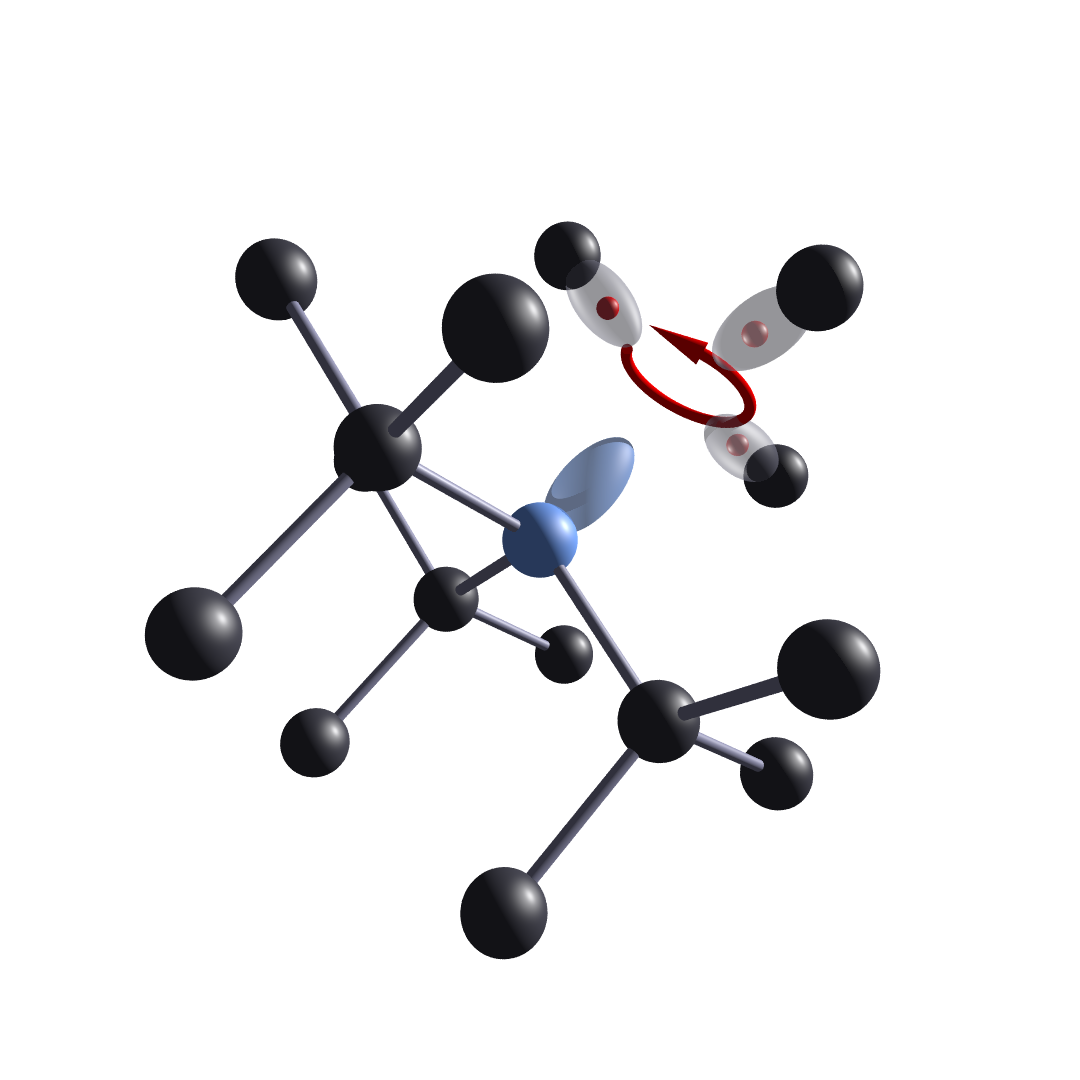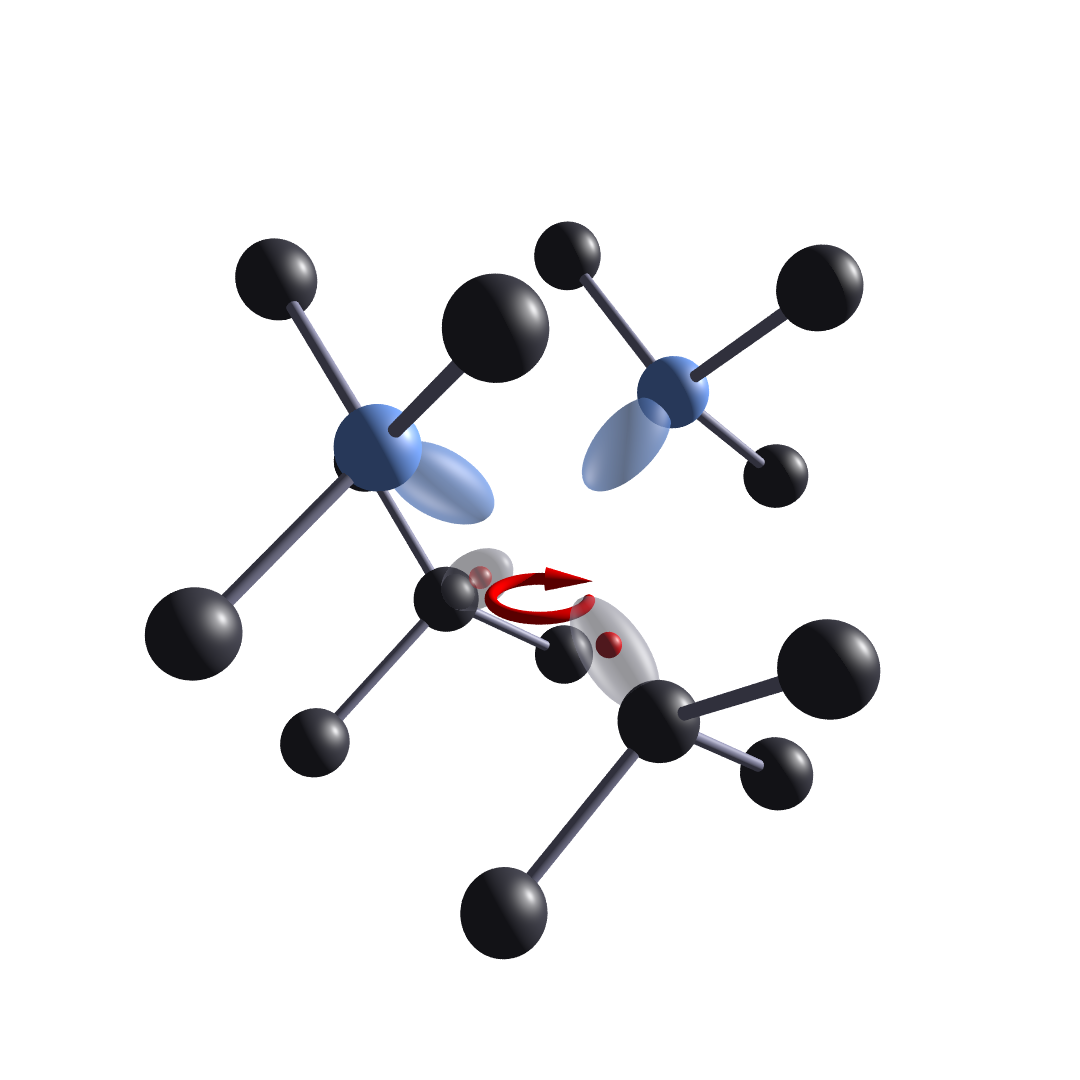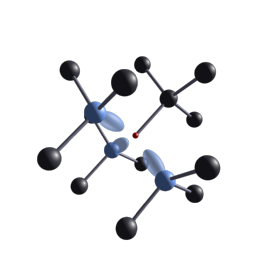Enrik Nako
I started the DST CDT in 2014 and am now a PhD student here at Warwick under the supervision of Prof. Mark Newton in the EPR and Diamond Research Group in Millburn House. Previous to this, I completed a BSc in Physics here at Warwick. I would like to acknowledge my PhD sponsors, EPSRC and De Beers for their support.
Identification of hydrogen-related defects in diamond
The incorporation, diffusion and migration of hydrogen within diamond continues to be a challenging area of research. Hydrogen is found in many natural diamonds, and always in CVD diamonds due to the growth plasma being predominantly (≥95%) hydrogen, yet many unanswered questions remain about the role of hydrogen in defects and bulk properties of diamond. A newly identified family of hydrogen-related defects – NV:H, N2V:H and N3V:H (Figure 1) – present in as-grown and annealed CVD diamond do not follow the aggregation of nitrogen observed in HPHT synthetic and natural diamond. The reason being that the high concentration of hydrogen in CVD diamond compared to nitrogen may be altering the reaction pathways.



Figure 1: The newly identified family of hydrogen-related defects (from left-to-right), NV:H, N2V:H and N3V:H. Black spheres represent carbon, blue spheres represent nitrogen and the red spheres represent hydrogen. Red arrows represent rapid hydrogen reorientation between unfilled orbital lobes.
This PhD will involve continuing the study on NnV:H (n=1, 2, 3) type defects in order to be confident in the aggregation path up to very high annealing temperatures (2500+ °C). Focus will also be placed on the 1359 nm defect, the structure of which is unknown, but isotopic substitution has shown it to have high symmetry and therefore must be simple in structure. This defect may be related to vacancy-hydrogen defects, which are well documented in other group 4 semiconductors (i.e. silicon, SiC), but are less well known about in diamond. The techniques to be used include: EPR (and potentially NMR), FTIR, UV-Vis, PL, CL, variable temperature and stress variations of all the techniques in combination with DFT results. It is hoped that by using these techniques with different custom CVD synthetic samples, that a detailed understanding of the role of hydrogen in diamond can be developed.
Teaching and Demonstrating
I help demonstrate for both the physics department and for the DST CDT Masters course.
For the physics department, I demonstrate the first year undergraduate electronics workshop. The workshop is intended to be an introduction to electronics and the possibilities it creates, with the topics covered being AC and DC circuits, the bipolar transistor, the op-amp and logic gates.
For the DST CDT, I help demonstrate the practicals in module 3, The techniques discussed and performed are EPR, FTIR and UV-Vis. These techniques are used to understand more about the properties of any defects and dopants in the diamond.
Conferences and Publications
De Beers 67th Diamond Conference, The University of Warwick. Poster presentation ‘Investigation of hydrogen-related defects in diamond’ July 2016.

Enrik Nako
EPR & Diamond Group
Department of Physics
University of Warwick
CV4 7AL
e.nako@warwick.ac.uk


